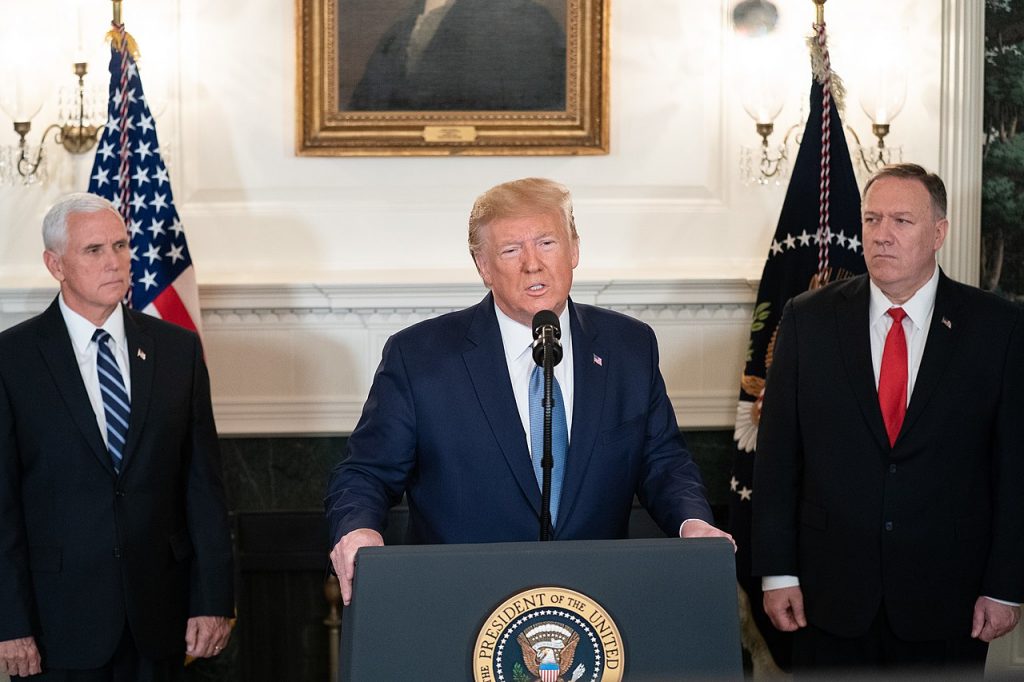The Effects of a “Chinese Virus” (March)
In March 2020, the Rights Writers were asked what role has the media played in covering the topic and what effects, positive and negative, has the media had on their topic, and what role ought the media to play.

We are currently faced with an unprecedented global threat; the COVID-19 coronavirus. This virus has effectively brought the world to a halt where people are relegated to quarantining at home and maintaining a social distance of at least 6 feet in order to avoid infection. This virus, which originated in Wuhan, China, and its spread, is a testament to the current state of the world: we are living in an age of globalization where information, people, and viruses may freely travel anywhere habited by man. I will remember the gravity and downright bizarre nature of this situation for the rest of my life.
Recently, President Trump has racialized the COVID-19 virus by calling it the “Chinese Virus”; an act which indelibly has and will continue to disrupt the racial cohesion that has historically made America so great. By racializing this virus and putting a Chinese face to it, President Trump has damaged the American psyche by setting an example that xenophobia is tolerated in the United States. The New York Times recently reported one of these xenophobic reactions, where a man angrily accosted a young Chinese woman in San Francisco (and eventually went as far as to spit on her) because of her skin color…and her affiliation with the nominal “Chinese Virus” as denoted by the White House. Another incident in Dallas,TX, which has since officially been labeled a hate crime, involved a man who brutally stabbed several members of an Asian American family–including a 2 and 6-year-old–because of fears about the coronavirus. What’s troubling is that the reported cases of racism towards Asian Americans most likely only scratch the surface.
It is evident that these examples are symptoms of a greater fundamental problem vested in not only the United States, but also in media coverage of crises like the COVID-19 outbreak around the world. Words can be effectively used to draw attention to certain perspectives, shift the blame of mishap to others, and most importantly from a media business perspective, drive viewership which influences the ever-important TV rating. When a virus is racially spun by the media, this endangers many peoples’ livelihoods and creates lasting effects of division worldwide.

Chinese Americans are not the only ones who are experiencing xenophobia and racism. In Italy, some Chinese kids at school have suffered from being called “Cinavirus” and even from physical attacks. Members of the Chinese community in Italy, especially those who work in the country’s garment factories (such as in Prato, which contains Italy’s largest “Chinatown” ethnic enclave) have experienced Italy’s Far-Right, xenophobic rage. The language used to fuel the COVID-19 pandemic–which is driven by both the media and from the top down by Italy’s Right-wing leadership–has only fueled Italy’s most xenophobic citizens and has prompted a series of verbal and physical attacks towards Italy’s Chinese population and other immigrant minority communities. In the case of Prato, even a Chinatown ethnic enclave, which is supposed to serve as a layer of protection for the Chinese minority population, wasn’t enough to insulate them from these attacks. In a way, membership in this Chinatown only drew attention to the fact that the community occupied a non-trivial area Prato, and that the COVID-19 virus was now a “Chinese Virus”.
Eloquently stated in an Atlantic article, “As the coronavirus spreads, the xenophobia it foments quickly intertwines with the political conditions in the countries it touches, coloring the responses of populations and their governments.” Each country’s media apparatus frames a specific narrative regarding the pandemic and who specifically deserves the blame for the havoc that it continues to wreak. With the current atmosphere of fear and uncertainty, it is clear that the media has the power to disseminate information about a subject, and depending on how they choose their words, they can have profound effects on the human rights of some of the most vulnerable populations. According to Foreign Policy, China has already led an effort to deflect blame for the pandemic by issuing propaganda saying that the coronavirus “Maybe originated in Italy”. Countries like Iran have leveraged the widespread fear from the COVID-19 to fuel their political agendas: Iran’s Ayatollah Ali Khamenei in a public address said that the U.S. may have created the virus to specifically target the DNA of Iranians. At the end of the day, more finger pointing will continue to fuel mistrust, xenophobia, and division in the world, and will ultimately leave the minorities–who are leveraged for their political capital–in danger.
So, what can the media do going forward to help protect the basic human rights of vulnerable populations?
There is no clear-cut answer.
While the media hopes to give its consumers access to the most current information available, it also has a business model that is not necessarily driven by an altruistic agenda. TV stations and media outlets produce content to drive maximum viewership (this translates to a metric called the Nielsen Rating, or commonly “TV Ratings”). It’s not surprising that Fox News, which happens to be the overwhelming leader in the U.S. media industry, has found a success model in producing some of the most inflammatory content in mainstream media. If content that simultaneously draws the attention of the masses and perpetuates divisions within our country continues to be produced, then we can expect that the human rights of the vulnerable populations in question will continue to be violated. Crises will be racialized, and ethnic populations will continue to experience the associated xenophobia. Perhaps only until this fundamental model is altered, will we be able to see real change.
